
 Tech
Tech
InTheGarageMedia.com

 Photography BY THE AUTHOR
Photography BY THE AUTHORruisin’ low and slow in big-city traffic I’ve certainly heard my share of automobile horns. Have you heard the shrill pitch of a typical modern horn today? Those don’t exactly issue an authoritative warning, do they? Years ago when American iron was more likely to be manufactured in America, you’d have absolutely known if you’d received a honking.
For our long-ongoing ’55 Chevy second-series project, it’s finally time to think about the littler things. With shelves’ worth of parts inventoried on pallet racks, we have only the standard left-side horn in the mix. Coincidentally, we’ve not yet ever seen an original truck of this type with a complete pair of horns. Despite the core support’s louvers for two, so far there’s always only one.
As decibel dispensers, a two-tone pair of originals would surely command respect. Since we know they’d bolt right on and line right up with existing louvers, it would make good sense to use them—if we could only find them.
At times like these it’s good to have access to an older wrecking yard. If I haven’t already mentioned this too many times before, I was brought up in that type of environment. Today there’s not much left of the inventory, but for a short time longer there’s still a few parts stashed.
Back in California, on the front porch of one crumbling structure there’s a wall of ancient orange crates. They’re historically significant in their own right, but they were also used for pre-dismantling and stocking small parts. Last I checked there’s a matching pair of 12V horns still in one of those crates.
Going only by memory, the aforementioned horns are from the Delco-Remy division of General Motors, and they’re early enough that they’re not made of plastic. I’d imagine they date to circa late ’60s—and that’s when horns were honkers!
Best of all, as I recall, the pair is symmetrical, as in (right and left) mirror images of one another. Since a lifted hood will occasionally expose them, we’d like them to look as though they belong.
In just the right positions behind the core support’s louvers, the smaller-than-stock Delco-Remy horns should look right at home. Quite conveniently for us, threaded mounting holes are already present in about the right places.
To get the mini-megaphone portions aimed properly through their louvers, the horns will need to be re-clocked. We can modify brackets for that, but providing certain rivets are uniformly spaced, there may be an easier way.
First things first; for any of this to actually happen there’ll be travel involved. The way our horns are hidden, shipping won’t be possible. It’s not like I can give directions to the secret stash place where no one else would ever go.
As the plan stands I’ll just go fetch that matching pair of symmetrical, two-tone, Delco-Remy horns. For the return trip I’ll just stuff them in my Samsonite and roll—without much illustration for that particular step.
Have you ever wondered what (apart from a big-city motorist) makes a horn honk? Back at the shop, we’ll conduct exploratory dissection. If it turns out they’re good enough to continue working with, we’ll restore and/or modify our honkers as necessary from there.
For our own particular purposes, we don’t mind that they’re not exactly stock for our ’55 Chevy second-series project, nor do we mind that a to-the-letter restorer of GM muscle cars might gladly pay up for the pair. Once they’re resplendent in shiny black urethane they should fit in with their classic truck surroundings just fine.
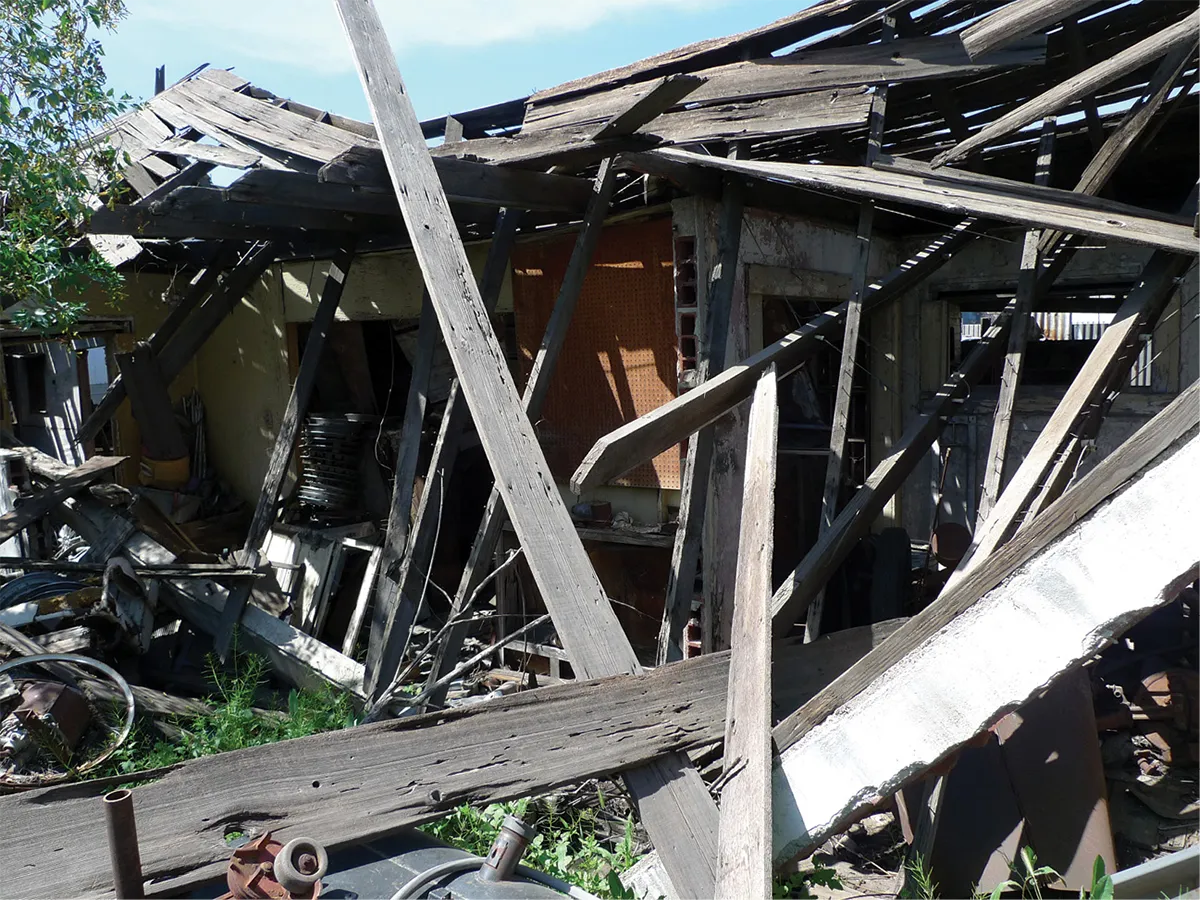

2. Sure enough, they’re still right here in the same old orange crate. For whatever reason, they were pulled but not sold. We’ll never know that part of their story.
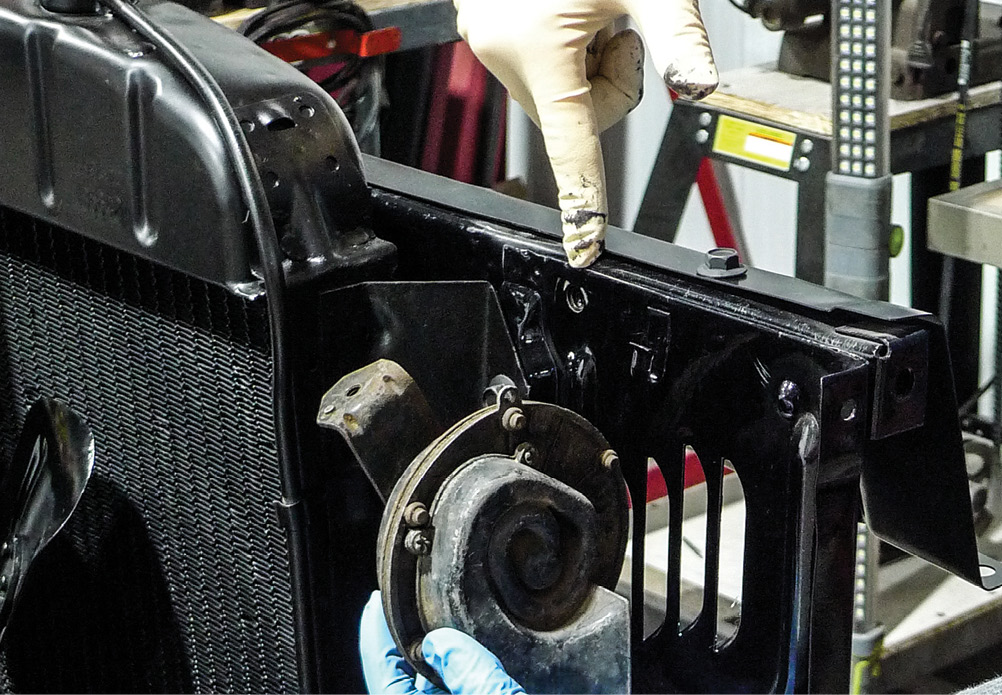

4. For our horn’s initial cleanup blast, we’ve stuffed some paper toweling up their snouts. This’ll be their first of two laps through the old bead-blasting cabinet.

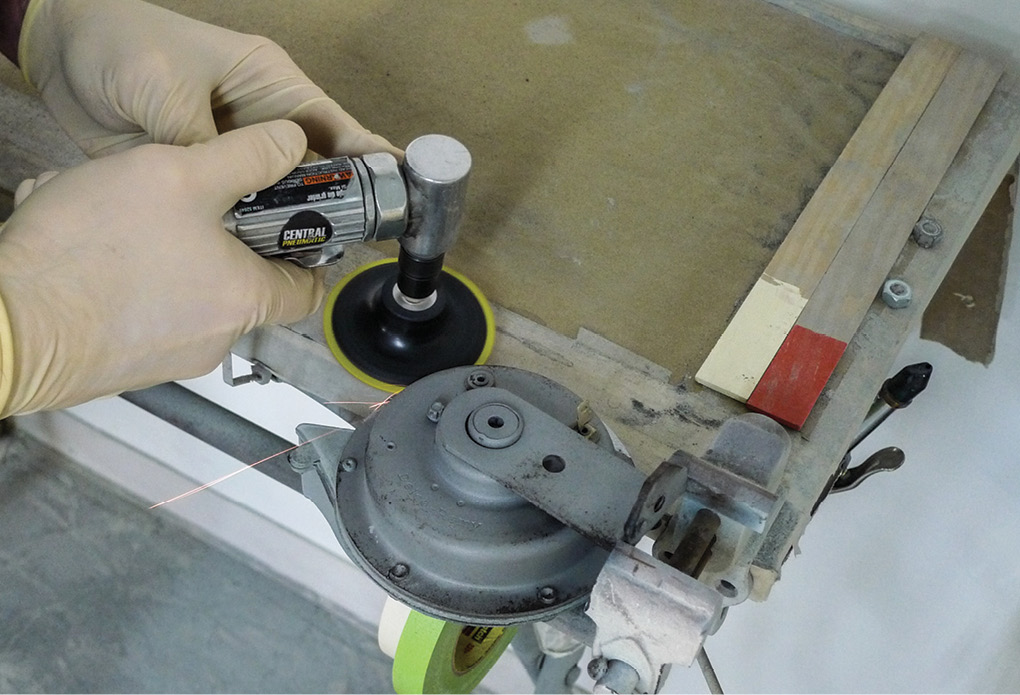
6. With initial bead-blasting pretty much done, we’re grinding heads of rivets. Here a little Harbor Freight angle die grinder with a 3-inch, 36-grit, Roloc-type disc works well.
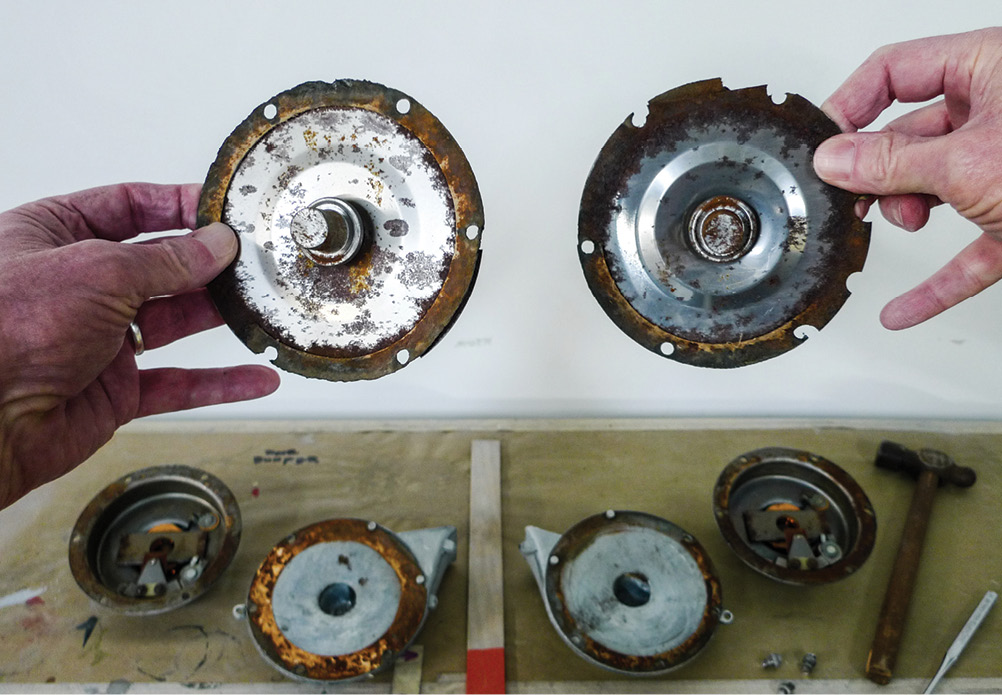
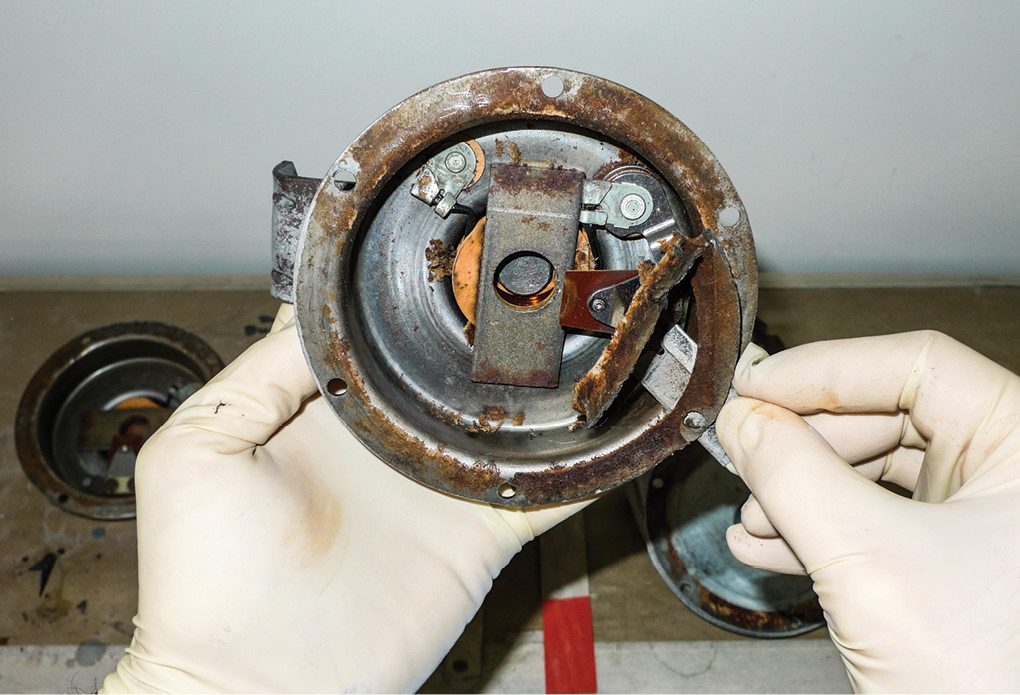
8. We won’t be bead-blasting the inner workings, either. In a manual manner we’ll clean these up as best we can. Obviously, there’ll be no salvaging the gaskets.
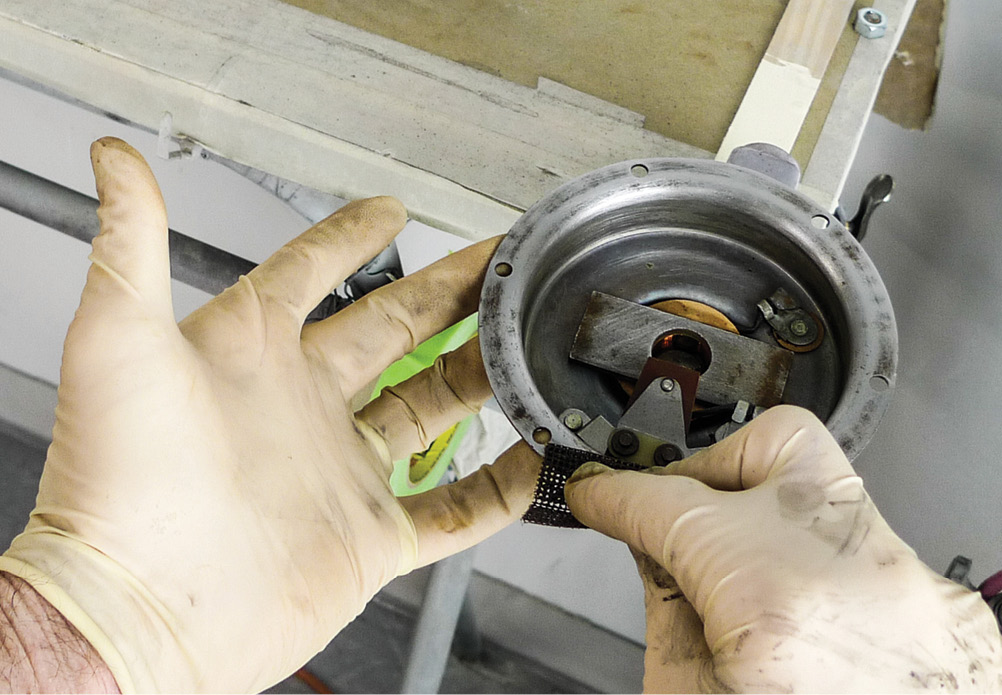
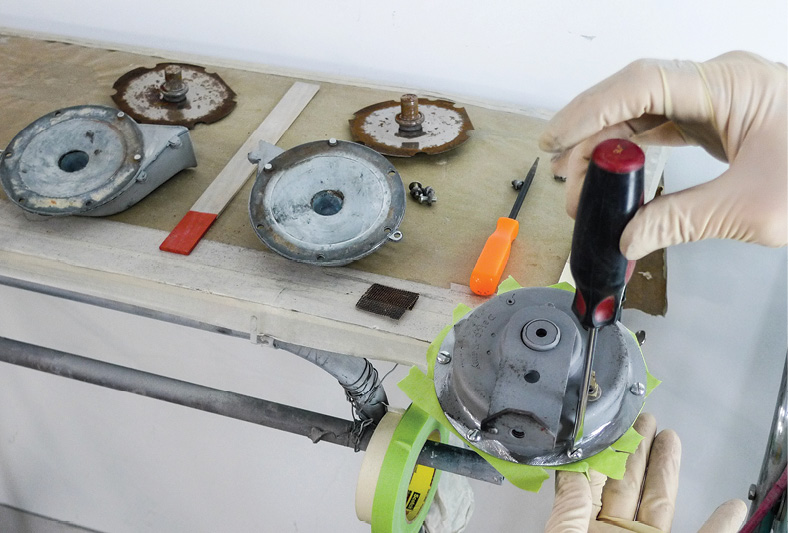



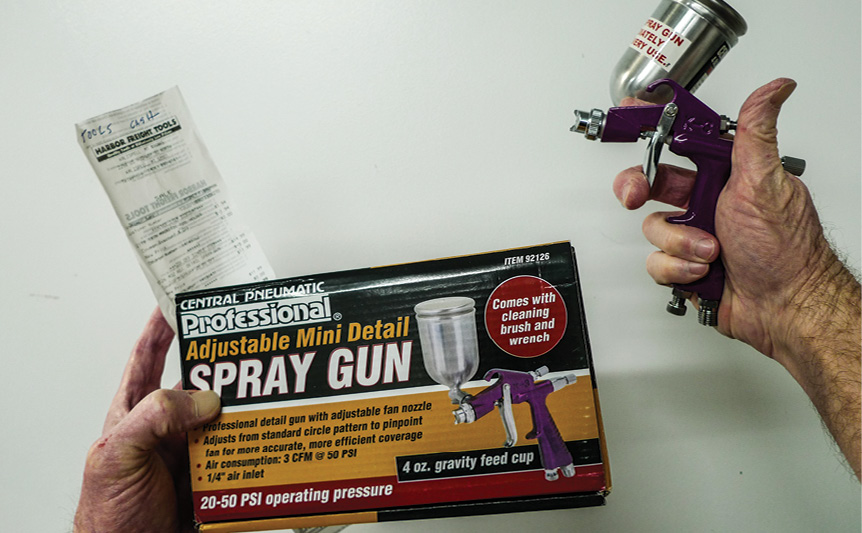


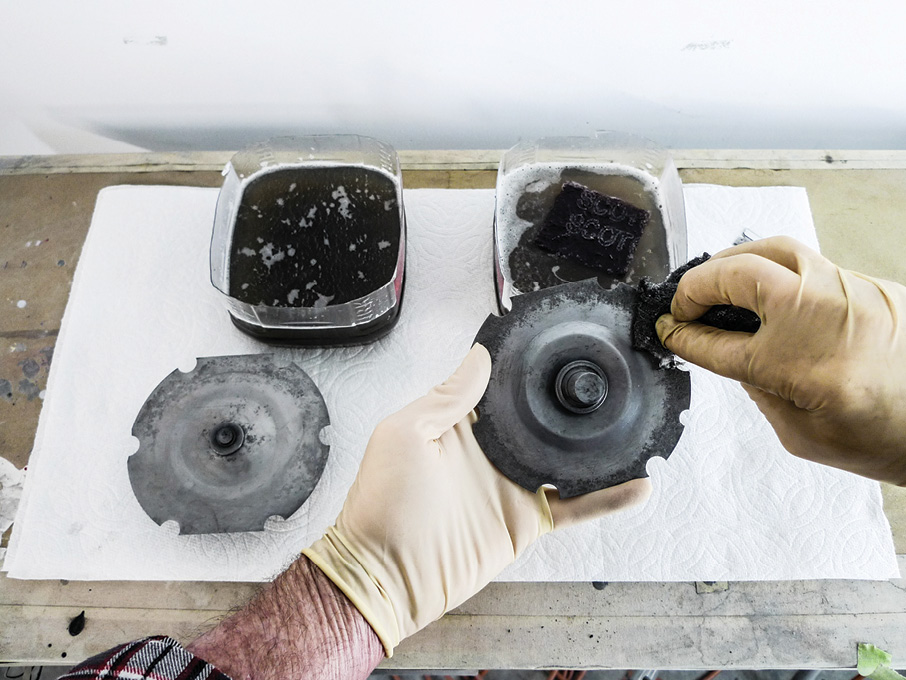


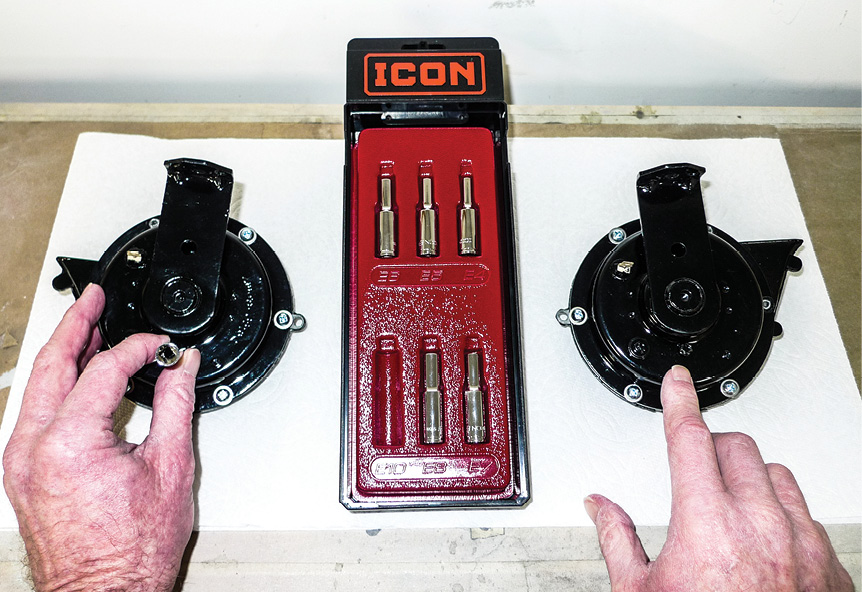


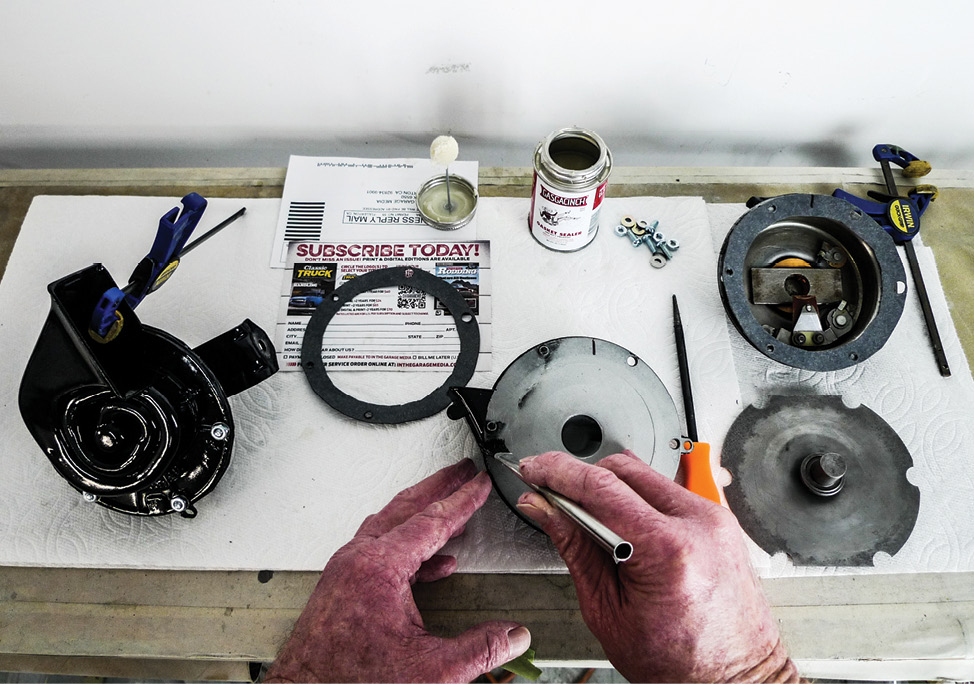


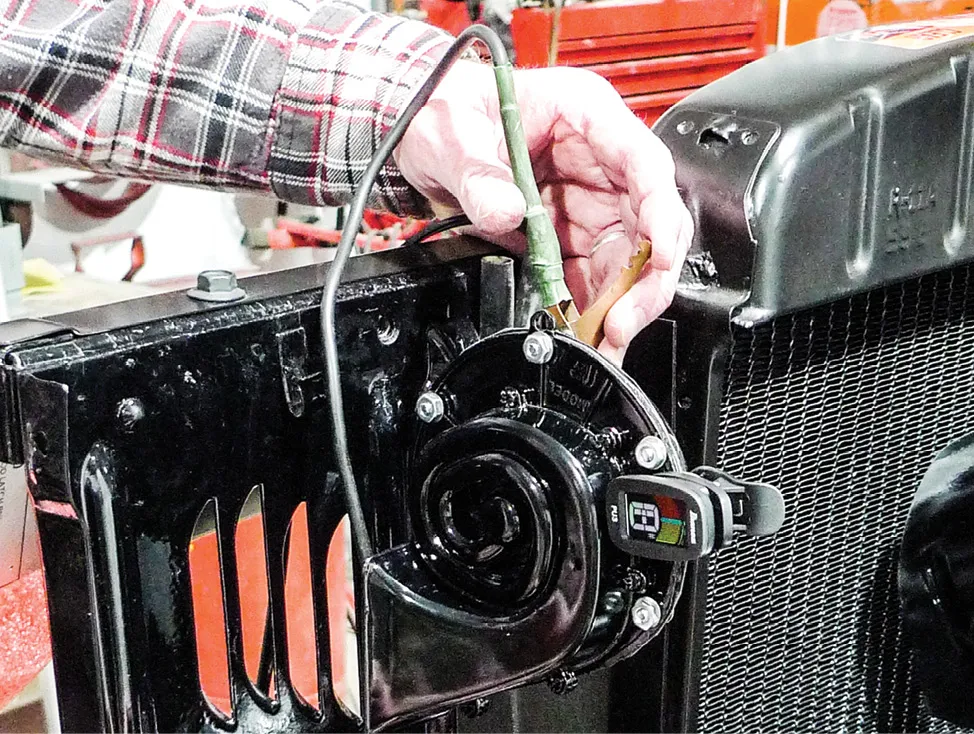

 SOURCE
SOURCE